
cognitive science lab.
Our mission is to do scientific investigation on implicit and explicit processes in human perception, cognition, and action. Recent projects include investigations of implicit and explicit processes of sequence learning and how action-effect influences emergence or modulation of sense of agency.
News
- Apr/2024
Mizuki Kira (master's student), Li Xiangyu (master's student), Cai Xinyi (research student) and Kanako Yoshimura (technical assistant) joined our lab!!
- Dec/2023
Our new research paper entitled "How many categories are there in crossmodal correspondences? A study based on exploratory factor analysis." has been published in PLOS ONE.
- Oct/2023
Li Xiangyu (research student) and Hyuma Koike (technical assistant) joined our lab!
- Apr/2023
M.Sc. Lin Yuanhao (master's student) and Sayaka Ishii (technical assistant) joined our lab!
- Mar/2023
Our new research paper (Collaboration with Dr. Sarah Esser, Prof. Hilde Haider, and Dr. Clarissa Lustig in University of Cologne) entitled "Action-effect knowledge transfers to similar effect stimuli" has been published in Psychological Research.
- Dec/2022
Our new research paper entitled "Memory decay enhances central bias in time perception" has been published in i-Perception.
- Oct/2022
A research student, Lin Yuanhao, joined our lab!
- Aug/2022
Our new research paper entitled "Motor engagement enhances incidental memory for task-irrelevant items" has been accepted for publication in Frontiers in Psychology.
- Dec/2021
Our new research paper entitled "Perceptual inference, accuracy, and precision in temporal reproduction in schizophrenia" has been accepted for publication in Schizophrenia Research: Cognition.
- Oct/2021
Our new research paper (Collaboration with Dr.Roberto Caldara and his research group in University of Fribourg) entitled "Rapid saccadic categorization of other-race faces" has been accepted for publication in Journal of Vision.
- Apr/2021
We will deliver a presentation in The 32nd International Congress of Psychology (ICP 2020+;2021/7/18-23), Prague, Czech Republic.
- Apr/2021
We will deliver a virtual presentation in The 2021 Vision Sciences Society meeting (2021/5/21-26).
- Oct/2020
Our new research paper entitled "Immediate action effects motivate actions based on the stimulus-response relationship" has been accepted for publication in Experimental Brain Research.
- Oct/2020
Our new research paper entitled "Sense of agency with illusory visual events" has been accepted for publication in Journal of Experimental Psychology: Human Perception and Performance.
- July/2020
We will deliver a virtual presentation in the 42nd Annual Virtual Meeting of the Cognitive Science Society (2020/7/29-8/1; Virtual Meeting).
- May/2020
Our new research paper (Collaboration with Dr. Tristan Loria and Dr.Luc Tremblay in University of Tronto) entitled "Deploying attention to the target location of a pointing action modulates audio-visual processes at non-target locations" has been accepted for publication in Attention, Perception, & Psychophysics.
- Apr/2020
A new project researcher, Takumi Tanaka, joined our lab!
- Sep/2019
Our lab's website opened!
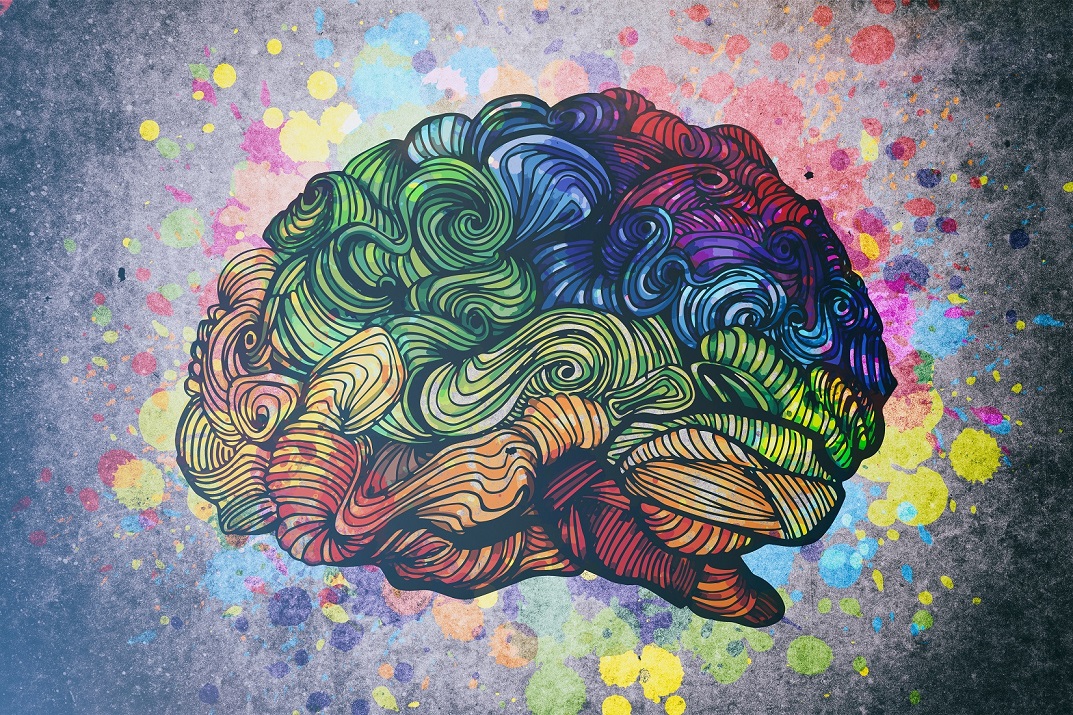
Research
Implicit transfer in visuomotor sequence learning
Learning behavioral sequences, such as typing on a keyboard, is vital in our daily life. Past studies have investigated how people implicitly or explicitly learn a sequence by adopting various experimental paradigms (e.g., artificial grammar learning, the discrete sequence production task, the visuomotor button press task, and the serial reaction time task). We mainly used the visuomotor button press task (hereafter called the m × n task; Hikosaka et al., 1995, J. Neurophysiol.). As you can watch in a movie on the left side, participants are required to learn a pre-determined pattern by trial-and-error. In the first learning phase (top movie), their error rate and reaction time were high and slow, but their performances became highly fluent in the late learning phase (bottom movie).
The main results of our research projects showed that people could implicitly transfer their obtained skills to a new sequence (Tanaka & Watanabe, 2014a, Cognitive Science, 2014b, Acta Psychologica). In our experiment, after participants learned a 3 × 7 sequence (i.e., learning session), the spatial configuration of the sequence was vertically mirrored (i.e., transfer session), for example. Notably, the experimenter instructed the participants to learn a newly generated sequence again (i.e., he/she did not instruct the rule of transformation). Then, after their completion, the experimenter interviewed them whether they were able to verbalize what they found in the second (transfer) session. Interestingly, those who could not report any rules performed the vertically mirrored sequence better than those who performed a randomly generated sequence (control group), indicating implicit transfer of the learned sequence.
In addition, we also have investigated the effects of learning methods in the m × n sequence (Tanaka & Watanabe, 2016, Acta Psychologica), explicit instruction of rules on skill transfer (Tanaka & Watanabe, 2017, Experimental Brain Research), and effects of model skills on observational learning (Tanaka & Watanabe, 2018, Quarterly Journal of Experimental Psychology). Currently, we are interested in the roles of action-effects on sequence learning (e.g., Tanaka & Watanabe, 2017, Frontiers in Psychology).
- Tanaka, K., & Watanabe, K. (2014a), Implicit transfer of reversed temporal structure in visuomotor sequence learning. Cognitive Science, 38(3), 565-579.
- Tanaka, K., & Watanabe, K. (2014b), Implicit transfer of spatial structure in visuomotor sequence learning, Acta Psychologica, 153, 1-12.
- Tanaka, K., & Watanabe, K. (2016). Impacts of visuomotor sequence learning methods on speed and accuracy: Starting over from the beginning or from the point of error. Acta Psychologica, 164, 169-180.
- Tanaka, K., & Watanabe, K. (2017). Explicit instruction of rules interferes with visuomotor skill transfer. Experimental Brain Research, 235(6), 1689-1700.
- Tanaka, K., & Watanabe, K. (2017). Effects of an additional sequence of color stimuli on visuomotor sequence learning. Frontiers in Psychology, 8:937.
- Tanaka, K., & Watanabe, K. (2018). Effects of model types in observational learning on implicit sequential learning. Quarterly Journal of Experimental Psychology, 71(7), 1596-1606.
Retrospective modulation of Sense of agency
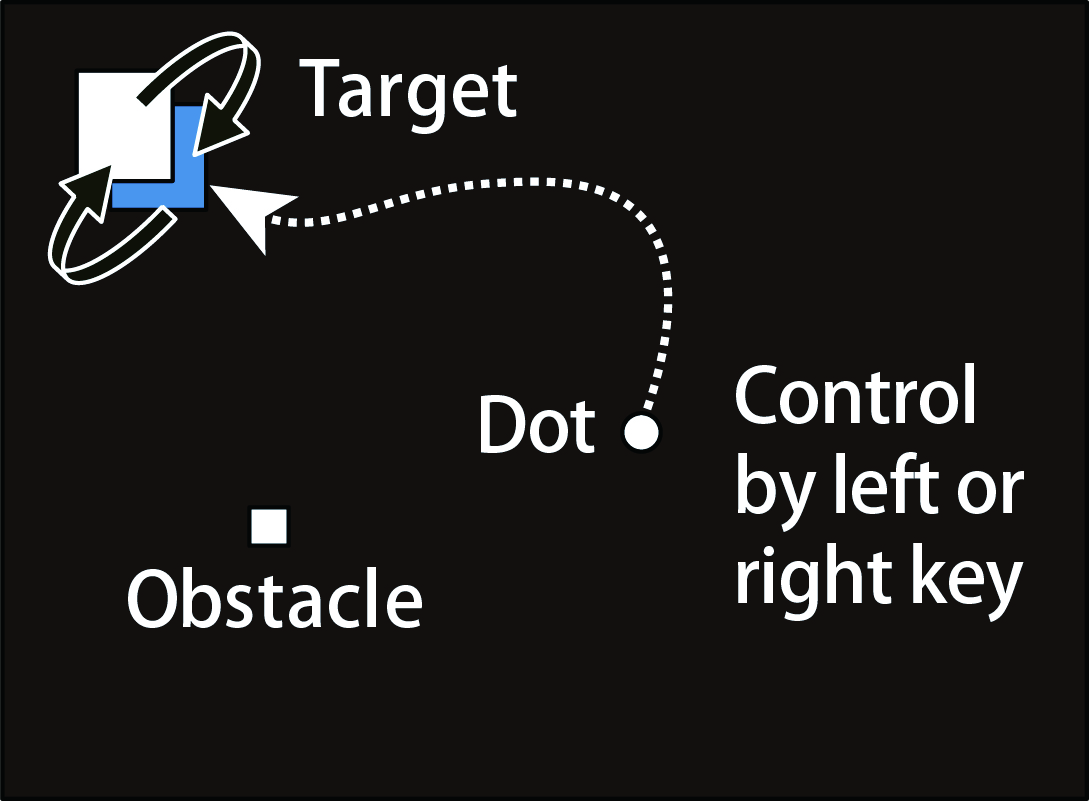
Sense of agency (SoA) is a subjective feeling of being in control of one's own actions and causing external events (Gallagher, 2000, Trends in Cognitive Science). For example, if a light around a person turned on immediately after he/she pressed a button, he/she likely felt that his/her action caused this result. We are interested in how SoA emerges, the environment modulates SoA, SoA can influence the following action or learning, and we can measure SoA (implicit and explicit measurement).
In our recent projects (Oishi, Tanaka, & Watanabe, 2018, PLoS One, 2019, Acta Psychologica), we focused on continuous actions closer to a situation in our daily lives. In one of our experiments, participants carried a white dot with a delay to a target square while avoiding obstacle squares (left panel). The color of the target changed unpredictably between white and blue. If the dot reached the target while it was white or blue, a trial was considered as successful or failed. Thus, actions (control of the white dot) during the task should result in almost identical experiences of successful and failed trials. After each trial, the participants reported to what extent they felt they had been in control of the dot. The results showed that SoA was higher with a shorter delay between button press and dot movement (i.e., easier control) and successful trials. These findings indicate that the sense of online control and the evaluation of continuous action based on feedback independently influence SoA. Remarkably, the evaluation retrospectively modulated SoA.
- Oishi, H.*, Tanaka, K.*, & Watanabe, K. (*equal contribution) (2019). Sense of agency in continuous action is influenced by outcome feedback in one-back trials, Acta Psychologica, 199, 102897.
- Oishi, H.*, Tanaka, K.*, & Watanabe, K. (*equal contribution) (2018). Feedback of action outcome retrospectively influences sense of agency in a continuous action task. PLoS ONE, 13(8): e0202690.
Color-Shape association
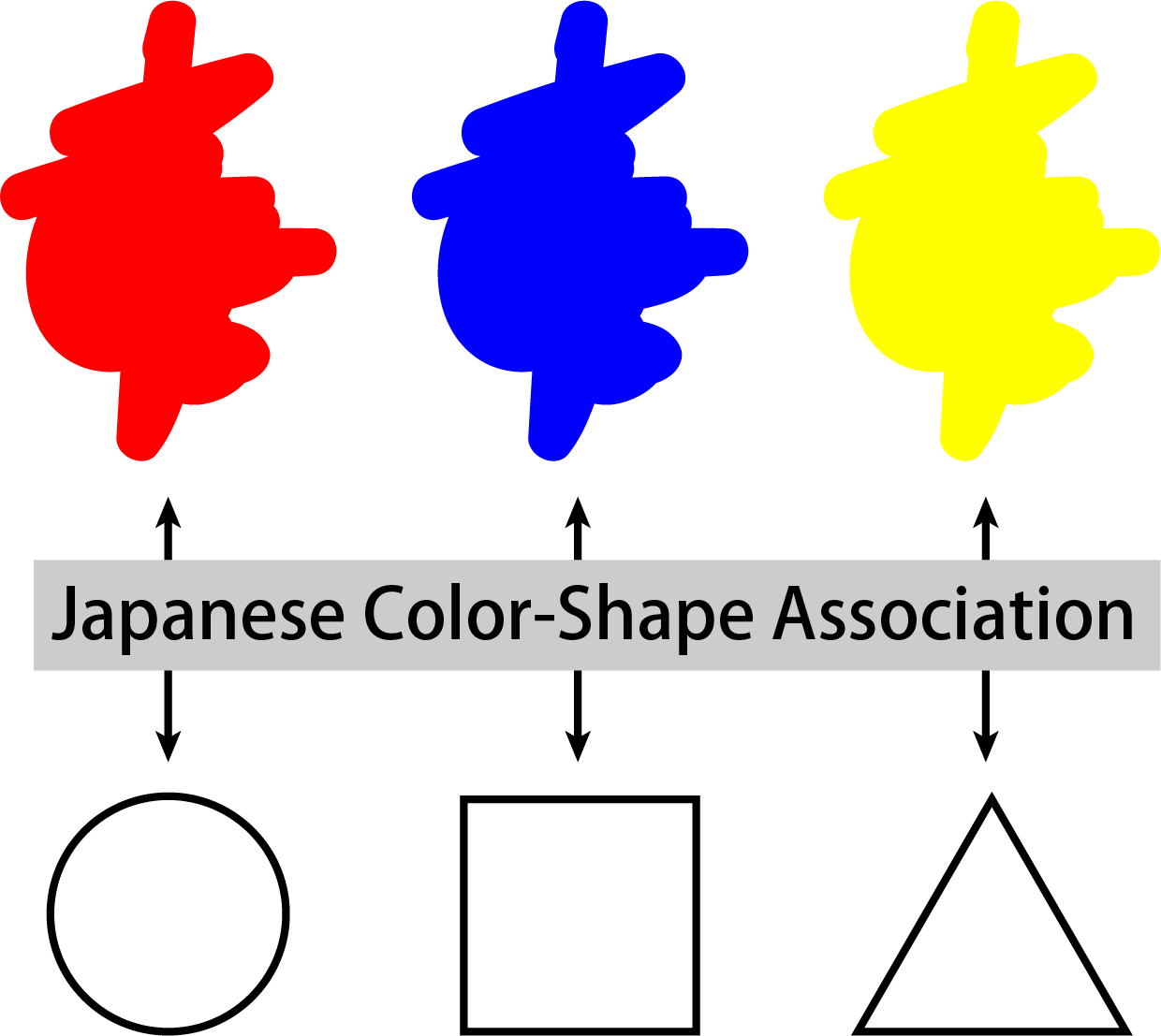
Artists and researchers have spent years examining general associations between colors and shapes. Kandinsky, a renowned abstract painter, proposed a fundamental correspondence between basic shapes and primary colors. For instance, circles, squares, and triangles are associated with blue, red, and yellow, respectively (Kandinsky, 1912, 1947).
Our research projects examined whether color-shape associations (hereafter, CSA) were unlikely influenced by differences between languages and cultures. So far, we found that Japanese participants associated shapes with specific colors, and these color–shape associations, by and large, were consistent with those in previous pieces of literature: red-circle, blue-square, and yellow-triangle. In addition, correspondence analysis indicated that most CSA could be interpreted by congruent "warmth" perception for colors and shapes. Therefore, semantic associations between visual features of color and shape might lead to the color–shape associations. The CSA was replicated even in a study using an indirect behavioral test (Implicit Association Test; Chen, Tanaka, & Watanabe, 2015, PLoS ONE). Recently, we have been interested in the developmental process of CSA.
- Chen, N., Tanaka, K., Namatame, M., & Watanabe, K. (2016). Color-Shape Associations in Deaf and Hearing People. Frontiers in Psychology, 7, 355.
- Chen, N., Tanaka, K., Matsuyoshi, D., & Watanabe, K. (2015), Associations Between Color and Shape in Japanese Observers, Psychology of Aesthetics, Creativity, and the Arts, 9(1), 101-110.
- Chen, N., Tanaka, K., & Watanabe, K. (2015), Color-Shape Associations Revealed with Implicit Association Tests, PLoS ONE, 10(1), e0116954-e0116954.

people
Associate Professor
Dr. Kanji Tanaka is an associate professor in the Division for Experimental Natural Science, Faculty of Arts and Science, Kyushu University. Prior to his current position, he was a JSPS research fellow DC1 and PD at the University of Tokyo, worked as a project researcher at the University of Tokyo, a JSPS research fellow PD at Waseda University and worked as an assistant professor at Waseda Institute for Advanced Study in Waseda University. He earned his PhD in 2013 from the University of Tokyo. He is interested in scientific investigations of explicit and implicit sequence learning and transfer, and recently tries to understand roles of sense of agency on learning situation.
e-mail: kanji.tanaka(at)artsci.kyushu-u.ac.jp
Google Scholar
Research map
Full CV in English (in prep)
Full CV in Japanese (in prep)
Master's Student
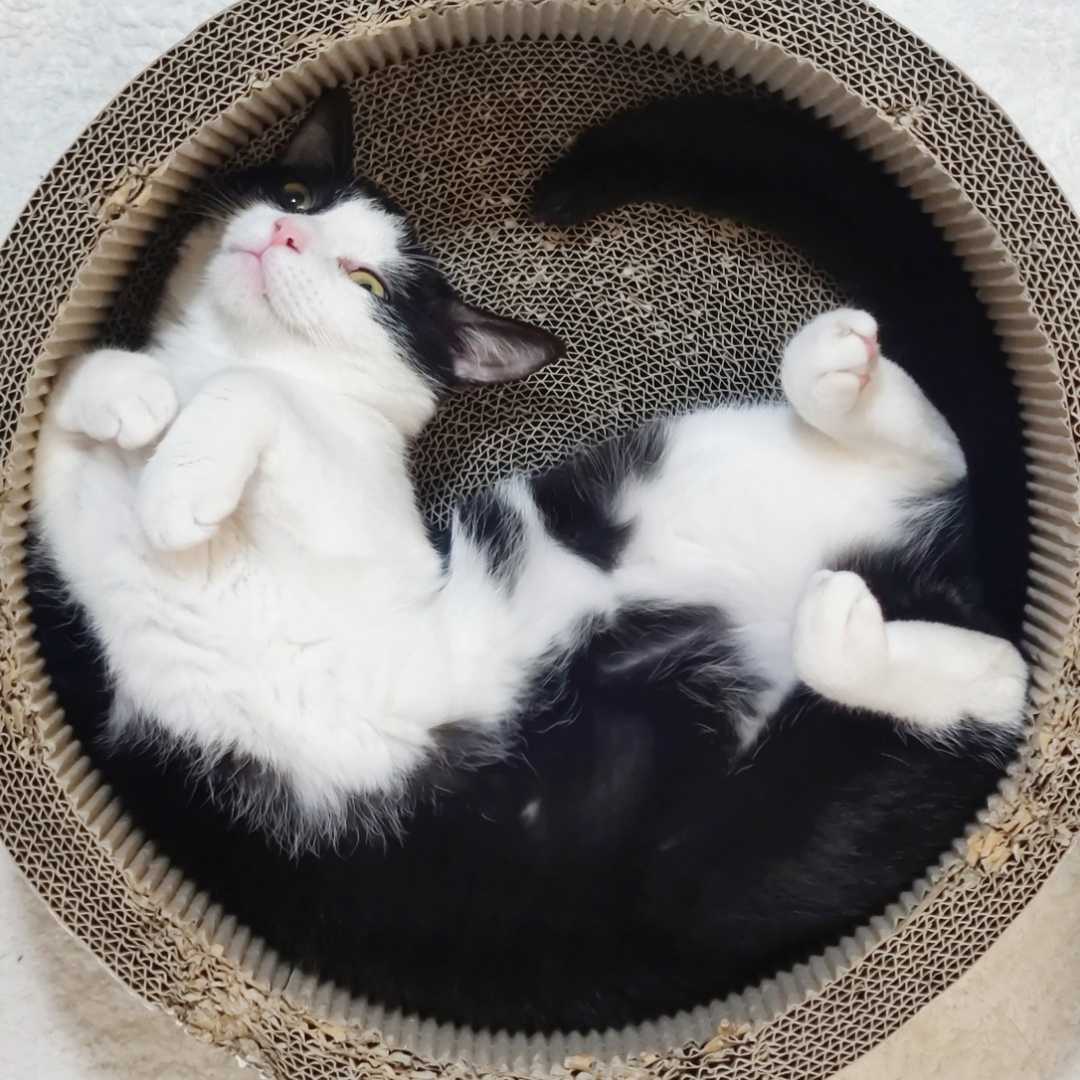
Lin Yuanhao
Research theme: The effect of screen shake on the sense of agency in video games
The sense of agency refers to the experience of being the initiator of one’s own voluntary actions and, through them, influencing the external world, which is important not only in daily life but also in video game play. Although previous studies have shown that gameplay causes changes in perception and cognition, the effects of visual effects in video games on the SoA have not yet been clarified. My research focuses on the Screen Shake effect, known as one of the visual effects of video games, and investigates its effect on the players' SoA.
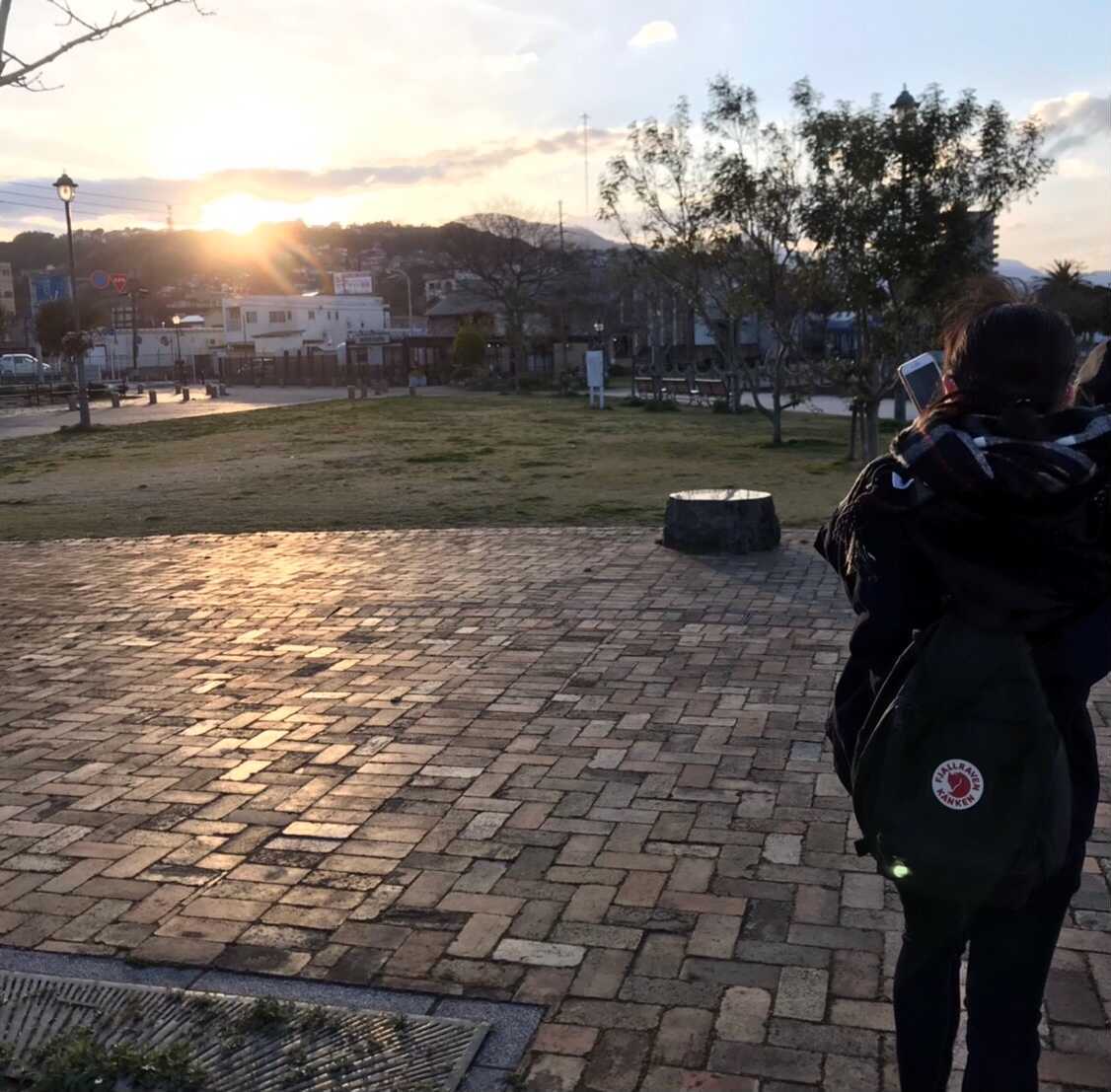
Mizuki Kira
Research theme:A psychophysiological study of emotional differences between performers and listeners of music
We touch music many times in everyday life and experience many kinds of emotions by listening to or playing music. I’m interested in the difference in emotions between music performers and listeners. I want to investigate the emotions and their intensity while people play an instrument or listen to some music by measuring subjective evaluation metrics and physiological responses.
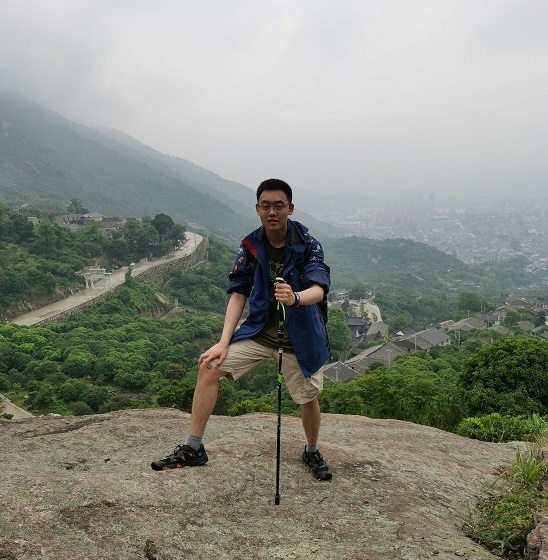
Li Xiangyu
Research theme:The effect of directional action on memory
Motor action, such as swiping at a screen or pressing a button, is essential in our daily lives. Simple actions could affect our cognitive processes such as memory. For example, pressing a button can help us better remember the stimulus that was being presented at the moment after its execution. According to spatial metaphor, people tend to think “up” as positive and “down” as negative. I want to investigate how directional actions, such as swiping upward or downward, could have different effects on memory through behavioral experiments.
Research Student

Cai Xinyi
Technical Assistant

Sayaka Ishii

Hyuma Koike
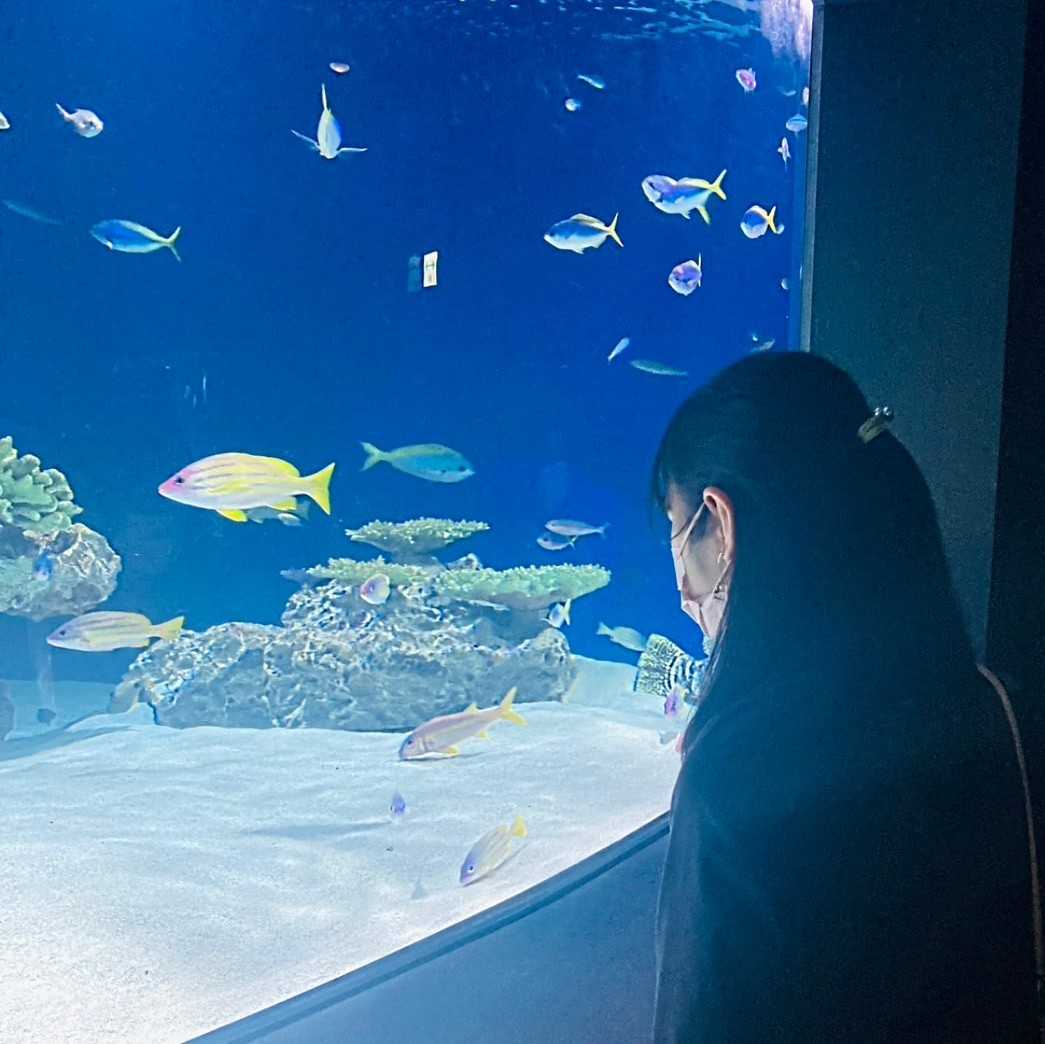
Kanako Yoshimura

publication
and
presentation
Journal Articles
- Tanaka, T., Watanabe, K., & Tanaka, K. (2021). Immediate action effects motivate actions based on the stimulus–response relationship. Experimental Brain Research, 239, 67–78.
- Tanaka, K., & Watanabe, K. (2021). Sense of agency with illusory visual events. Journal of Experimental Psychology: Human Perception and Performance, 47(2), 238–251.
- Loria, T., Tanaka, K., Watanabe, K., & Tremblay, L. (2020). Deploying attention to the target location of a pointing action modulates audiovisual processes at nontarget locations. Attention, Perception, & Psychophysics, 82(7), 3507-3520.
- Oishi, H.*, Tanaka, K.*, & Watanabe, K. (*equal contribution) (2019). Sense of agency in continuous action is influenced by outcome feedback in one-back trials, Acta Psychologica, 199, 102897.
- Oishi, H.*, Tanaka, K.*, & Watanabe, K. (*equal contribution) (2018). Feedback of action outcome retrospectively influences sense of agency in a continuous action task. PLoS ONE, 13(8): e0202690.
- Tanaka, K., & Watanabe, K. (2018). Effects of model types in observational learning on implicit sequential learning. Quarterly Journal of Experimental Psychology, 71(7), 1596-1606.
- Tanaka, K., & Watanabe, K. (2017). Effects of an additional sequence of color stimuli on visuomotor sequence learning. Frontiers in Psychology, 8:937.
- Tanaka, K., & Watanabe, K. (2017). Explicit instruction of rules interferes with visuomotor skill transfer. Experimental Brain Research, 235(6), 1689-1700.
- Chen, N., Tanaka, K., Namatame, M., & Watanabe, K. (2016). Color-Shape Associations in Deaf and Hearing People. Frontiers in Psychology, 7, 355.
- Tanaka, K., & Watanabe, K. (2016). Impacts of visuomotor sequence learning methods on speed and accuracy: Starting over from the beginning or from the point of error. Acta Psychologica, 164, 169-180.
- Tanaka, K., & Watanabe, K. (2015). Effects of learning duration on implicit transfer. Experimental Brain Research, 233(10), 2767-2776.
- Chen, N., Tanaka, K., Matsuyoshi, D., & Watanabe, K. (2015), Cross preferences for colors and shapes, Color Research & Application, 1-8.
- Chen, N., Tanaka, K., Matsuyoshi, D., & Watanabe, K. (2015), Associations Between Color and Shape in Japanese Observers, Psychology of Aesthetics, Creativity, and the Arts, 9(1), 101-110.
- Chen, N., Tanaka, K., & Watanabe, K. (2015), Color-Shape Associations Revealed with Implicit Association Tests, PLoS ONE, 10(1), e0116954-e0116954.
- Tanaka, K., & Watanabe, K. (2014), Implicit transfer of spatial structure in visuomotor sequence learning, Acta Psychologica, 153, 1-12.
- Tanaka, K., & Watanabe, K. (2014), Implicit transfer of reversed temporal structure in visuomotor sequence learning. Cognitive Science, 38(3), 565-579.
- Hosoda, C., Tanaka, K., Nariai, T., Honda, M., & Hanakawa, T. (2013) Dynamic neural network reorganization associated with second language vocabulary acquisition: a multidimensional imaging study. The Journal of Neuroscience, 33(34), 13663-13672.
- Tanaka, K., & Watanabe, K. (2013) Effects of learning with explicit elaboration on implicit transfer of visuomotor sequence learning. Experimental Brain Research, 228(4), 411-425.
- Tanaka, K., & Watanabe, K. (2013) Interference between accustomed number-space mappings and unacquainted letter-space mappings in a button press task. Human Factors: The Journal of Human Factors and Ergonomics Society, 55(6), 1088-1100.
- Tanaka, K., & Watanabe, K. (2012) Overestimation and underestimation in a configural response learning task. Kansei Engineering International Journal, 11(4), 171-178.
- Tanaka, K., & Yamaoka, T. (2010) Understanding characteristics of the transfer of mental models in terms of electrical devices. Psychologia, 53(4), 256–266.
- Tanaka, K., & Yamaoka, T. (2010) Extracting and understanding the relationship between components of the capacity in elderly people in terms of electrical device comprehension. Journal of Human Ergology, 39(2), 121-131.
Proceedings
- Tanaka, K., & Watanabe, K. (2017) Impacts of cue reliability and explicit instruction on visual attention. Proceedings of the 2017 – 9th International Conference on Knowledge and Smart Technology (KST), 270-273. ISBN: 978-1-4673-9075-0.
- Tanaka, K., Chien, S., Yamamoto, K., & Watanabe, K. (2016) Memory distortion of depth of a visual stimulus for perception and action. Proceedings of the 2016 – 8th International Conference on Knowledge and Smart Technology (KST), 281-286. ISBN: 978-1-4673-8139-0.
- Ueda, N., Tanaka, K., &Watanabe, K. (2016) Gender differences in visuomotor sequence learning. Proceedings of the 2016 – 8th International Conference on Knowledge and Smart Technology (KST), 271-274. ISBN: 978-1-4673-8139-0.
- Yamamoto, K., Tanaka, K., & Watanabe, K. (2015). The role of global configuration in detection of mirror and translational symmetries. Proceedings of the 2015 - 7th International Conference on Knowledge and Smart Technology (KST), 165-168. ISBN: 978-1-4799-6049-1.
- Chen, N., Tanaka, K., Namatame, M, & Watanabe, K. (2015). Consistency of color-shape associations in deaf people. Proceedings of the 2015 - 7th International Conference on Knowledge and Smart Technology (KST), 173-175. ISBN: 978-1-4799-6049-1.
- Chen, N., Tanaka, K., Nagamori, Y., Namatame, M., & Watanabe, K. (2014) Grapheme-color association in deaf people. ACA 2014 Conference Proceedings, 169-172. ISBN 978-986-86796-4-1.
- Chen, N., Tanaka, K., Matsuyoshi, D., Nagamori, Y., Namatame, M., & Watanabe, K. (2014) Color-shape association in deaf and hearing people. Proceedings of the 2014 6th International Conference on Knowledge and Smart Technology (KST), 85-88. ISBN:978-1-4799-1424-1.
- Chen, N., Tanaka, K., Matsuyoshi, D., & Watanabe, K. (2013) Cross preference for color combination and shape. Proceedings Book of the 1st Asia Color Association Conference, 98-101. ISBN 978-974-625-619-3.
- Chen, N., Tanaka, K., Matsuyoshi, D., & Watanabe, K. (2013) Associations between colors and shapes in Japanese observers. The Proceedings of International Association of Societies of Design Research, 5811-5818. ISBN: 978-4-9980776-3-3.
- Tanaka, K., & Watanabe, K. (2013). Implicit transfer of mirrored spatial structure in visuomotor sequence learning. In M. Knauff, M. Pauen, N. Sebanz, & I. Wachsmuth (Eds.), Proceedings of the 35th Annual Conference of the Cognitive Science Society (pp. 3504-3509). Austin, TX: Cognitive Science Society. ISBN: 978-0-9768318-9-1.
- Chen, N., Tanaka, K., Matsuyoshi, D., & Watanabe, K. (2013) Correlated preference for color and shape, The Proceedings of International Conference on Biometrics and Kansei Engineering, 297-300. ISBN978-0-7695-5019-0.
- Tanaka, K., & Watanabe, K. (2012) Effects of explicit knowledge on transfer of visuomotor sequence learning. In N. Miyake, D. Peebles, & R. P. Cooper (Eds.), Proceedings of the 34th Annual Conference of the Cognitive Science Society, 1036-1041. Austin, TX: Cognitive Science Society. ISBN 978-0-9768318-8-4.
- Tanaka, K., & Watanabe, K. (2012) Effects of feedback on an energy conservation task under uncertainty. Proceedings of the International Conference on Kansei Engineering and Emotion Research, KEER2012, 616-621. ISBN:978-986-03-2488-4.
- Chien, S., Tanaka, K., & Watanabe, K. (2012) Effects of exposure to and simulated purchase of green products on altruistic and pro-environmental behaviors. Proceedings of the International Conference on Kansei Engineering and Emotion Research, KEER2012, 610-615. ISBN:978-986-03-2488-4.
- Tanaka, K., & Watanabe, K. (2011) Overestimation and underestimation in learning and transfer. The Proceedings of International Conference on Biometrics and Kansei Engineering, 81-86, J. Guerrero, California:IEEE Computer Society. ISBN:978-0-7695-4512-7.
- Tanaka, K., & Yamaoka, T. (2008) Extracting the Components of Elderly People's Capacity in Electrical appliances and Grasping Relationship with the Components. Computer-Human Interaction, Volume 5068, Springer Berlin / Heidelberg, 420-426. ISBN: 978-3540705840.
- Tanaka, K., Tsuji, T., Emoto, Y., & Yamaoka, T. (2007) Comparing the selling points of products with problems of products. IASDR07 PROCEEDINGS Emerging Trends in Design Research, CR-ROM (15 pages).
Oral Presentations in International Conferencess
- Tanaka, K., & Watanabe, K. (2017/2/1-4) Impacts of cue reliability and explicit instruction on visual attention. 9th International Conference on Knowledge and Smart Technology (KST), Pattaya, Thailand.
- Tanaka, K., Chien, S., Yamamoto, K., & Watanabe, K. (2016/2/3-6) Memory distortion of depth of a visual stimulus for perception and action. 8th International Conference on Knowledge and Smart Technology (KST), Chiangmai, Thailand.
- Ueda, N., Tanaka, K., &Watanabe, K. (2016/2/3-6) Gender differences in visuomotor sequence learning. 8th International Conference on Knowledge and Smart Technology (KST) , Chiangmai, Thailand.
- Yamamoto, K., Tanaka, K., & Watanabe, K. (2015/1/28-31) The role of global configuration in detection of mirror and translational symmetries. 7th International Conference on Knowledge and Smart Technology (KST) , The Tide Resort Hotel, Thailand.
- Chen, N., Tanaka, K., Namatame, M, & Watanabe, K. (2015/1/28-31) Consistency of color-shape associations in deaf people. 7th International Conference on Knowledge and Smart Technology (KST) , The Tide Resort Hotel, Thailand.
- Chen, N., Tanaka, K., Nagamori, Y., Namatame, M., & Watanabe, K. (2014/9/4-7) Color-grapheme associations in deaf people. The 2nd Conference of Asia Color Association (ACA2014), Taipei, Taiwan.
- Chen, N., Tanaka, K., Mastumoshi, D., Nagamori, Y., Namatame, M., & Watanabe, K. (2014/1/30-31) Color-shape association in deaf and hearing people. Special session on "Recent Advances in Cognitive Science", 6th International Conference on Knowledge and Smart Technology (KST-2014), Burapha University, Thailand.
- Chen, N., Tanaka, K., Matsuyoshi, D., & Watanabe, K. (2013/12/11-14) Cross preference for color combination and shape. The 1st Asia Color Association Conference (ACA2013), Thanyaburi, Thailand.
- Chen, N., Tanaka, K., Matsuyoshi, D., & Watanabe, K. (2013/8/26-30) Associations between colors and shapes in Japanese observers. 5th international congress of international association of societies of design research.(IASDR2013), Tokyo, Japan.
- Chen, N., Tanaka, K., Matsuyoshi, D., & Watanabe, K. (2013/7/5-7) Correlated preference for color and shape. 2013 International Conference on Biometrics and Kansei Engineering (ICBAKE2013), Akihabara, Japan.
- Hosoda, C., Tanaka, K., Tatekawa, M., Honda, M., Osu, R., & Hanakawa, T. (2013/6/20-23) Neural substrate of making it through the goal. Neuro 2013, Kyoto International Conference Center, Japan.
- Tanaka, K., & Watanabe, K. (2012/8/1-4) Effects of explicit knowledge on transfer of visuomotor sequence learning. COGSCI 2012 - 34th Annual Cognitive Science Conference, Sapporo, Japan.
- Tanaka, K., & Watanabe, K. (2012/5/22-25) Effects of feedback on an energy conservation task under uncertainty. International Conference on Kansei Engineering and Emotion Research, Penghu, Taiwan.
- Chien, S., Tanaka, K., & Watanabe, K. (2012/5/22-25) Effects of exposure to and simulated purchase of green products on altruistic and pro-environmental behaviors. International Conference on Kansei Engineering and Emotion Research, Penghu, Taiwan.
- Tanaka, K., & Watanabe, K. (2011/9/19-22) Overestimation and underestimation in learning and transfer. 2011 International Conference on Biometrics and Kansei Engineering (ICBAKE2011), Takamatsu City, Kagawa, Japan.
- Tanaka, K., & Yamaoka, T. (2008, 7) Extracting the Components of Elderly People's Capacity in Electrical appliances and Grasping Relationship with the Components. Computer Human Interaction 8th Asia-Pacific Conference (APCHI2008), Seoul, Korea.
- Tanaka, K., Tsuji, T., Emoto, Y., & Yamaoka, T. (2007, 11) Comparing the selling points of products with problems of product. IASDR07, Kowloon, Hong Kong.
Poster Presentations in International Conferencess
- Tanaka, T., Watanabe, K., & Tanaka, K. (2020/7/29-8/1) Immediate action-effects facilitate response speed via stimulus-response association, 42nd Annual Virtual Meeting of the Cognitive Science Society, Virtual Meeting
- Loria, T., Tanaka, K., Watanabe, K., & Tremblay, L. (2019/10/19-23) What can audiovisual illusions teach us about gaze vs. action related spatial attention?, Society for Neuroscience, Chicago, USA.
- Ueda, N., Tanaka, K., Maruo, K., Sumiyoshi, T., Watanabe, K. & Hanakawa, T. (2019/8/21-24) Increased central bias in time reproduction in schizophrenia with predominantly positive symptoms. WPA World Congress of Psychiatry, Lisbon, Portugal.
- Oishi, H., Tanaka, K., & Watanabe, K. (2019/6/25-28) Sense of agency in continuous action is influenced by outcome feedback in one-back trials. The 23rd Meeting of the Association for the Scientific Study of Consciousness, Ontario, Canada
- Loria, T., Hajj, J., Tanaka, K., Watanabe, K., & Tremblay, L. (2019/5/17-22) The deployment of spatial attention during goal-directed action alters audio-visual integration, The 19th annual meeting of the Vision Sciences Society (VSS2019), Florida, USA.
- Tanaka, K. & Watanabe, K. (2019/3/7-9) Sense of agency for action-effect grouping with illusory visual events. International Convention of Psychological Science (ICPS2019) , Paris, France.
- Loria, T., Tanaka, K., Watanabe, K., & Tremblay, L. (2018/11/3-7) Modulation of audio-visual processes at attended vs. unattended spatial locations. Society for Neuroscience, San Diego, USA.
- Loria, T., Hajj, J., Tanaka, K., Watanabe, K., & Tremblay, L. (2018/10/21) Visual attention influences audiovisual event perception and the susceptibility to the fusion illusion. Canadian Society for Psychomotor Learning and Sport Psychology (Proceedings of the SCAPPS 2018 Annual Conference), Toronto, Canada.
- Oishi, H., Tanaka, K., & Watanabe, K. (2018/6/26-29) Unpredictable feedback of results in continuous action retrospectively influences sense of agency. The 22nd Meeting of the Association for the Scientific Study of Consciousness, Krakow, Poland.
- Loria, T., Tanaka, K., Tremblay, L., & Watanabe, K. (2018/6/14-17) Attentional modulation of multisensory event perception in a voluntary reaching movement. The 19th Annual International Multisensory Research Forum, Toronto, Canada.
- Lasrado, S., Sokhn, N,. Tanaka, K., Watanabe, K., & Caldara, R. (2018/5/18-23) Race at First Sight. The 18th annual meeting of the Vision Sciences Society (VSS2018), Florida, USA.
- Tanaka, K., & Watanabe, K. (2016/07/24-29) Time evaluation while performing sequential actions. The 31st International Congress of Psychology (ICP2016), Yokohama, Japan.
- Watanabe, K., & Tanaka, K. (2016/7/12-13) Emotional inhibition increases risky decisions in a gambling task. The first meeting of the Society for the Advancement of Judgment and Decision Making Studies, Palma de Mallorca, Spain.
- Tanaka, K., Kawai, T., & Watanabe, K. (2016/7/14-17) Effects of adding a color stimulus sequence to a spatial response sequence on visuomotor sequence learning. The 12th Asia Pacific Conference on Vision, Esplanade Hotel, Fremantle, Australia.
- Lee, R. K., Tanaka, K., Kakizaki, M., & Watanabe, K. (2016/5/13-18) Changes in audiovisual cue utilization strategy when cues become unreliable. Vision Science Society 16th Annual Meeting, Tradewinds Island Resorts, Florida, USA.
- Lee, R. K., Tanaka, K., Hachisuka, K., Okuno, E., & Watanabe, K. (2015/5/13-18) Cleaving to cues that are no longer informative: Audio-visual asymmetry in cue utilization. Vision Science Society 15th Annual Meeting, Tradewinds Island Resorts, Florida, USA.
- Tanaka, K., Chen, N., & Watanabe, K. (2014/7/19-22) The level of categorical knowledge affects visual search efficiency. The 10th Asia-Pacific Conference on Vision (APCV 2014), Takamatsu, Japan.
- Tanaka, K., & Watanabe, K. (2014/3/12-13) Implicit transfer in visuomotor sequence learning. Conference on Systems Neuroscience and Rehabilitation, Tokorozawa, Saitama, Japan.
- Hosoda, C., Tanaka, K., Tatekawa, M., Honda, M., Osu, R., & Hanakawa, T. (2013/11/8-13) Neural substrate of making it through the goal. Society for Neuroscience, San Diego, USA.
- Tanaka, K., & Watanabe, K. (2013/7/31-8/3) Implicit transfer of mirrored spatial structure in visuomotor sequence learning. The Annual Meeting of the Cognitive Science Society, Berlin, Germany.
- Hosoda, C., Tanaka, K., Osu, R., Honda, M., & Hanakawa, T. (2012/10/13-17) The more/less ability, the more/less brain structure. Society for Neuroscience, New Orleans, USA.
- Tanaka, K., Ono, F., & Watanabe, K. (2012/7/2-6) The relationship of two numerical magnitudes influences spatial shifts of attention. Association for the Scientific Study of Consciousness, University of Sussex, Brighton, UK.

Call for participation
In our lab, we recruit students who can participate in our psychological experiments.
Contents of experiment
You participate in a simple reaction task, which is like a TV game (If we run a unique experiment such as recording your eye movements, the detailed information is written in a delivered message). As a basic procedure, you may look at a stimulus shown on a monitor or listen to a sound. Then, you are required to react according to a given instruction. Through experiments, we cannot read your mind and judge your personality. Obtained data will be statistically coped and your personal information will not be presented anywhere.
Registration
Only students at Kyushu University can participate in our experiments.We manage a participation pool by LINE business. To receive a message about recruiting from our lab., please be a friend of ours. Please send your student ID and name to the following e-mail address. After confirming it, we will send you the registration material.
tanaka.lab.experiment(at)gmail.com
Time
Duration depends on each experiment, but it is likely 60 or 90 mins. As usual, the experiment time follows the time slot at Kyushu University. The first period starts at 8:40 and ends at 10:10, the second period begins at 10:30 and ends at noon, the third period starts at 13:00 and ends at 14:30, and so on. Please consider your participation when you have a free period. The 90 mins include explanations of informed consent, mini-break, and (one or several) experiments. Please check the details in a delivered message via LINE.
Place
Center zone 3 in Ito campus. However, it may change according to type of experiments.
Reward
QUO cards can be used in many convenience stores, bookstores, and restaurants. The price depends on the experiment duration and type of experiment. You can receive a 1,000-yen QUO card per hour as a primary reference.
Important reminder
Some documents and instructions are written in Japanese. We can verbally translate it into English in explanations, but minimum Japanese skill is required. Please note that on the participation date, if you would not show up in the experiment room without notification and be late or behave badly (e.g., sleep), your registration will be deleted without notification. Then, we may decline your further participation.

jobs/Admissions
Jobs
Current status: no job available
We welcome JSPS Postdoctoral Fellows. JSPS offers five postdoctoral fellowship programs, each with different eligibility requirements. For details, see JSPS Postdoctoral Fellowship for Research in Japan.
Admission
Our lab belongs to the Graduate School of Human-Environment Studies, Kyushu University from October in 2021. Our mission is to do scientific investigation on implicit and explicit processes in human perception, cognition, and action. Please check the “Research” section in this website for PI’s current working themes.
We are currently accepting students in the Master’s course and Ph.D. course. Please check the website of Graduate School of Human-Environment Studies for more detail on admission. In our lab, students are required to master programming (e.g., Matlab and Python) and statistical analysis skills to achieve our goals. To help this, our lab and also our psychology course offers a research and educational program.
We always welcome students who are interested in our research and lab. Please feel free to contact Kanji Tanaka (kanji.tanaka at artsci.kyushu-u.ac.jp) and stop by our lab (ok with online meeting, too)! Before our meeting, please read through the “Research” section and think about what you are interested in.
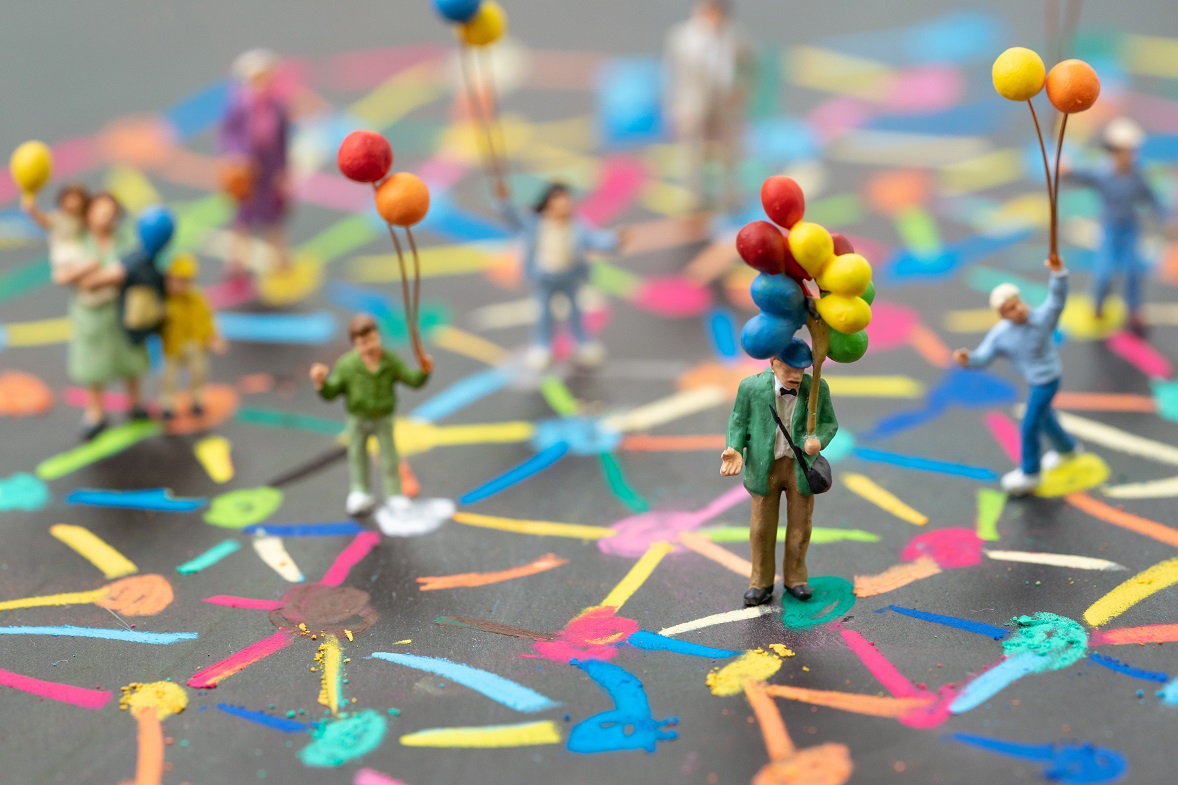
links/Alumni
Instituion
- Kyushu University, Faculty of Arts and Science
- Kyushu University, Graduate School of Human-Environment Studies
Collaborators
- Prof. Katusmi Watanabe, Waseda University
- Prof. Haider Hilde, University of Cologne
- Prof. Roberto Caldara, University of Fribourg
- Dr. Sarah Esser, University of Cologne
- Dr. Tessei Kobayashi, NTT
- Dr. Yuko Okumura, NTT
- Dr. Kentaro Yamamoto, Kyushu University
- Dr. Takumi Tanaka, The University of Tokyo
- Dr. Kyoshiro Sasaki, Kansai University
- Dr. Loria Toristan, Tronto University
- Dr. Natsuki Ueda, National Institute of Mental Health, National Center of Neurology and Psychiatry
- Dr. Maiko Kobayashi, Waseda University
- Dr. Ryoji Onagawa, Waseda University
- M.Sc. Felice Tavera, University of Cologne
- Assistant, Mr. Toshiyuki Numata, Waseda University(2016-2017), The University of Tokyo(2018-2019)
Alumni
- Takumi Tanaka (2020/Apr - 2021/Mar)
- Rena Iimori (2021/Jan - 2024/Mar)
- Kumiko Fujinaga (2021/Jan - 2024/Mar)
Post doc
Technical Assistant